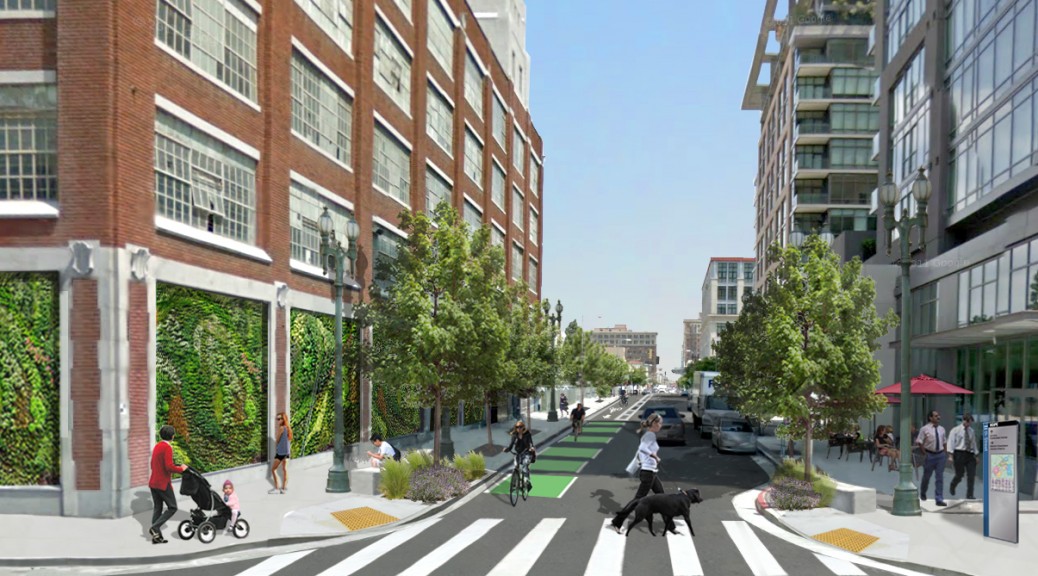Last summer I had the opportunity to travel to California for several weeks. My sister and I spent time driving up and down the coast of central California exploring the landscape and more than anything — attempting to feel the environment. We decided that we would like to go to San Francisco for a couple of days before we had to return to home, so we booked an AirBnB in a reasonable part of town and took a bus out to the city. My family and I had traveled to San Francisco twice before and both times were entertaining, yet this time was different.
In the past we had drove to each landmark in the city and done the pre ordained activity. Yet on this trip we skipped the Pier, Chinatown, and the stone fortress island of Alcatraz and focused on what it meant to be an active member of the city. Our host at our room share informed us of activities and areas to check out that you wont find in any tour guide pamphlet and my sister and I set out on our journey. As we walked the city, we began to notice that this was not the same San Francisco that we had been to twice before. Everywhere we turned there was something different, yet something the same. The streets were the destination.
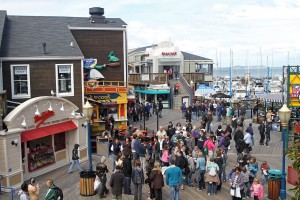
In Jane Jacobs book “The Death and Life of Great American Cities” she describes how San Francisco, while a dense city, provides moments of relief with tiny parks interspersed throughout the city. In their city, “A tiny triangular street intersection leftover, which in most cities would either be flattened into asphalt or else have a hedge, a few benches and a be a dusty nonentity, in San Francisco is a fenced miniature world of its own, a deep, cool world of water and exotic forest, populated by the birds that have been attracted.” These moments are designed and provide a diversity of experiences as one travels through the city. Even if one simply walks by the park, they are visually drawn in and their mind walks through regardless of what their body does.
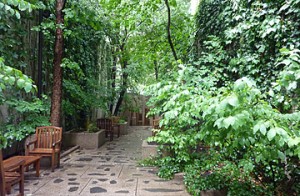
Kansas City has a large system of parks and boulevards that in their prime were known on the national scale. While some of the parks that line the boulevards and parkways have some unique features, many appear to lack key features that Jane Jacobs describes as necessary. In her chapter on the Uses of Neighborhood parks she states that city parks need to be lively and offer variety. She also argues that parks need to be where the city thrives and mixes with each other, and while Kessler might have attempted this in certain areas of Kansas City, much of the parks within the boulevards system are not lively nor diverse. Many of the parks just seem to be a wide open green space vacant of life rather than somewhere where I would personally like to spend time.
Kansas City seems to offer what Jacobs calls generalized parks. These are parks that aim at attracting a wide array of people from around the area. Jacobs gives four elements in design that generalized parks should strive for. The first is intricacy, this is related to the variety of reasons that one would attend the park. If a park is to be intricate it must have an array of opportunities for interaction and recreation. This is also where design comes into play. How accessible is the park? What are the benches like? What kind of activities are possible there? Another element of design is centering. Jacobs tells us that there must be a central gathering point within the generalized park. Many of the large parks in Kansas City tend to lack a center and I believe this is something we can focus on. The last two elements are sun and enclosure. These two are related by their nature. The relationship between the park goer and the environment can hinge critically upon their experience of the sun and a feeling of being enclosed. I believe many of the parks in the city do a good job of balancing these two elements. I would also like to point out the enclosure that is available on the parkways and boulevards. The tree lined streets give a good sense of enclosure when traveling by foot or wheel. Some parts of the boulevard system have fell out of this, namely broadway and many streets east of Troost.
When the New York Planning commission asked sociologist William Whyte to study why plazas and parks were either successful or not, the world of urban design took a leap forward. In his “… Street Life Project” Whyte used cameras and researchers to study the trends and behaviors of New Yorkers as they spent time in various spaces. His scientific-like observations led to very simple methods that designers can employ to help create more desirable spaces. Many of these conclusions included:
- Flexible Seating: Moving Chairs work wonders
- Seating Height: Too high or two low makes for a empty area
- Relationship to the street: People like to watch the street
- Where people sit: They sit where there is seating
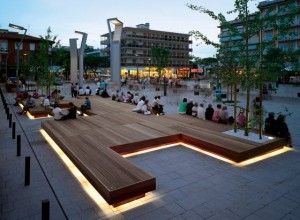
Many of his observations seem like common sense today, yet when designing spaces, there are many things that can go unnoticed. If there is one thing to be gained from Whyte’s research it is that thoughtful design enables higher use.
In the works of H.B. Jacobs “Streets That Teach”, Jacobs depicts the worlds streets that have been successful. By showing the street scape in plan and section view, the reader is drawn into the pedestrian scale to almost experience the variety of place. One of the streets detailed in the work is Via Cola di Rienzo in Rome.
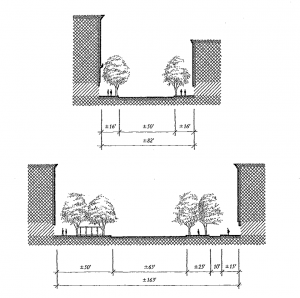
It is a tree lined street with buildings that are about 70 to 80 feet on either side. Its walkable with shops lining the boulevard. The side streets are full of parked cars oriented towards this street. Jacobs compendium offers the reader the ability to export the possibilities of what a street can be. Today we have technologies such as Google Street View where the viewer can observe streets around the world in 360 degrees, yet there is something about being there that you can not replicate in the digital or paper world.
When I was in San Francisco last summer, I experienced the streets in a way that I could not from my chair. The sights, sounds, textures, smells and energy that those streets had were full of intention and reflected what I consider to be good design. Small pocket parks interspersed through my walk of SOMA, interesting waste bins to put my coffee cup. Trees that offered shade as I walked up one of the higher hills downtown. There were people who cared about all these things, and I was one of them.
Today when I walk around Kansas City, I can feel something changing. People are beginning to become more interested in design. From the river market to westport, I am noticing more diversity of spaces and designs. The parks and boulevards system is unique in its on right, yet it is massive. As we move forward, I believe my generation wants to utilize our cities parks more often, yet they lack the diversity of experiences that many other parks in the world have. From what Jacobs and Whyte have discovered, I believe that our parks and boulevards system needs an improved focus on design. Broadway boulevard is one of the most trafficked boulevards in the city yet it is one of the least emblematic boulevards of its kind. This disconnect needs to be remedied with a focus on creating more welcoming streets and better designed park spaces where people want to be.
Sources:
Jane Jacobs, The Death and Life of Great American Cities, (1961)
H.B. Jacobs, A Compendium of Streets: Streets That Teach
William H. Whyte, The Design of Spaces, (1988)
